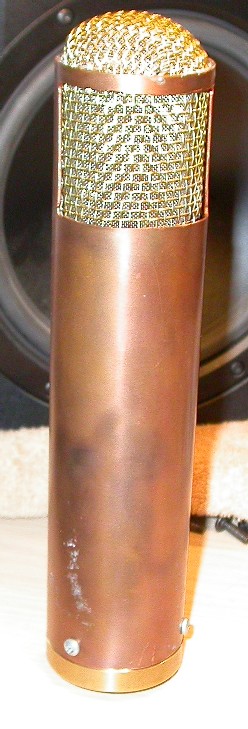

These are photos of my DIY tube microphone. Details? The capsule is my attempt at duplicating a Neumann M7 capsule. The capsule uses a glued-in diaphragm (like the M7) but made of 6 micron mylar (unlike the M7's 10 micron PVC material). A gold coating of somewhere between 50 and 150 angstroms has been applied to the film (I do that too). It is tensioned to a resonance of about 950 Hz, which is quite similar to the tuning of the original M7 capsules. The rubber stuff you see lining the studs in the microphone is epichlorohydrine automotive vacuum hose. It was used to damp out any resonances in the structure, and to prevent rattling of the internal bits against the microphone shell. The tube is a 6AH6, which has a very high gain and a very low output impedance. It also has a fairly high capacitance between electrodes when wired in triode mode, and this capacitance and gain is a very important part of the performance of a microphone amplifier circuit. It can be used in place of the more traditional 6AU6, but the output is higher and more solid. The output transformer is a high-quality Sowter part, and additional components are soldered to a turret board located between the tube and transformer. Power supplied to this microphone include a 120 volt DC power feed and a 450 mA constant current source (typically 7.3 volts) used to drive the filament of the tube and also to provide a one volt bias to the cathode. This allows the amplifier to dispense with the traditional cathode bypass capacitor - other than power supply filtering, no electrolytic capacitors are used in the signal path.

